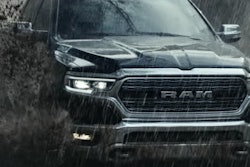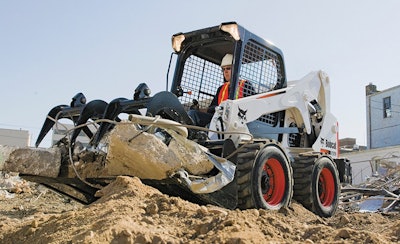
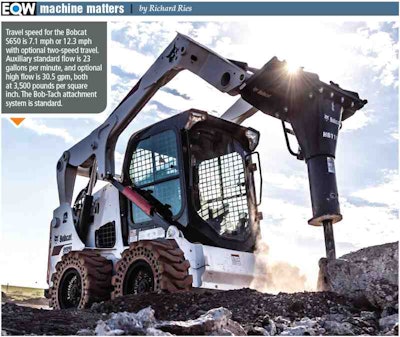
Some would say skid steers have run their course, and that compact track loaders (CTLs) have replaced them. “Fake news!” cry the manufacturers, and they have the facts to prove it.
True, CTL sales have soared, but depending on the manufacturer and the size category, skid steer sales have at least held steady and, in many cases, have slightly increased.
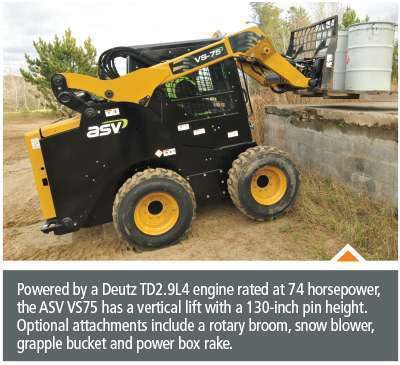
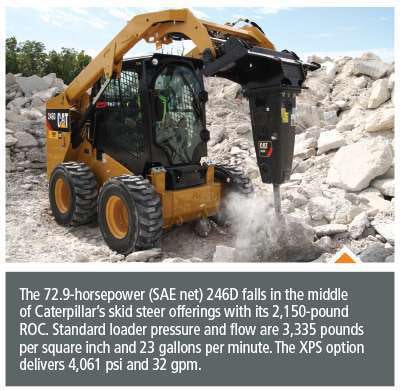
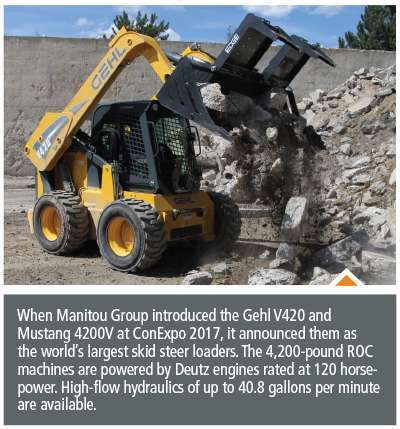
Scotese, Volvo skid steer product manager. He says that since the service life of a skid steer loader is 5,000 hours, many legacy machines will be due for replacement soon, “adding to the probability that market share erosion will level off after those machines are replaced.”
The second factor is that the shift in sales volume is almost exclusively a North American market phenomenon. Globally, skid steer sales far eclipse compact track loader sales, says Gregg Zupancic, product marketing manager, John Deere. “Outside of North America, CTL sales are spotty and number around 2,000 units per year, while skid steers are in the 20,000- to 30,000-unit range.”
Zupancic says it’s understandable that CTLs are stealing the limelight; Deere’s sales in 2016 were about 60 percent CTLs and 40 percent skid steer loaders. “But the trend line for skid steer sales over the past five years is up, and our sales of skid steers for 2017 were up about 1,000 units” as of November 1.
Speedier?
Another bit of conventional wisdom is that skid steers preserve their market share in part because they’re faster than CTLs. Marketwide, that’s true. Skid steers typically can travel 10 to 12 mph, while the top speed of CTLs is 7 to 10 mph. But not so fast, say some OEMs. Buck Storlie, testing and reliability leader with ASV, points out the company makes compact track loaders with travel speeds of 11 mph.
Some OEMs suggest that customers ask themselves, “How important is speed anyway?” Certain applications, such as sweeping and snow removal, favor faster speeds. Randy Tinley, product manager of skid steer and compact track loaders with JCB, says scraping operations are also better at higher speeds, but those are mostly found in ag (mucking out barns, for example) and less often in construction.
Lift-and-carry and traveling from site to site also emphasize speed. But for a large percentage of tasks, including loading and running attachments where the machine is stationary, top travel speed is not a factor. Examples of static operations with attachments include concrete pumps, stump grinders, chippers and augers, says Eric Dahl, product manager, Bobcat.
Now that we’ve killed the two most common myths,
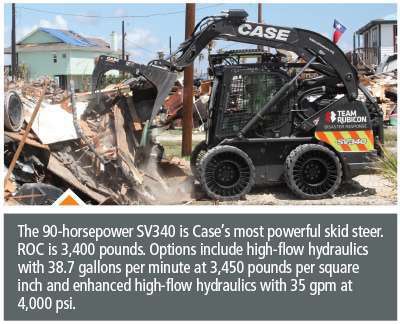
what truths remain?
Where skid steers lead
First on the list of great truths about skid steers is that they’re preferred for work on hard surfaces. And, yes, they’re faster. “And there are applications where the work may take place in the dirt, but the machine travels over pavement to get from one part of the job to another,” says Brent Coffey, loader product manager with Wacker Neuson. “The skid steer is the machine that covers the distance the quickest and handles both situations, work and travel, with equal
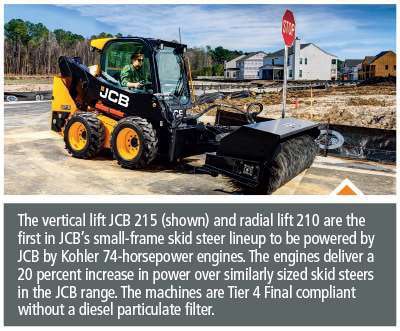
ease.”
With the right tires, skid steers are also the machine of choice in places where debris can damage equipment, such as demolition, recycling and waste handling. Brian Rabe, regional training manager for Manitou Americas (parent company of Gehl and Mustang), says skid steers have better shock absorption. “In applications with sharp bumps and in rocky conditions, skid steers provide better operator comfort than would be had in a compact track loader.”
They’re also preferred for snow removal, whether by snowplow, snow blower or snow pusher, because they provide greater traction. Snow removal is relevant to, at most, half of all skid steer customer

s, and then only for a certain portion of the year. But to those customers, a skid steer’s snow capabilities means it can generate
additional revenue instead of sitting idle for months.
With their amazing maneuverability – such as being able to counter-rotate and execute spin turns – skid steers shine in tight jobsites. “The skid steer is the original poster child for jobsite mobility and remains dominant in that role,” says Hugo Chang, wheel loader and compact product manager at LiuGong.
This maneuverability results from the weight bias on a skid steer, which is typically around 30/70 front/rear unloaded; the reverse ratio is true with a full bucket. Dahl says this imbalance means one set of wheels, the front or rear, is bearing less weight than the other set at any time. This makes tight turns easier, reduces tire scrub and minimizes surface damage.
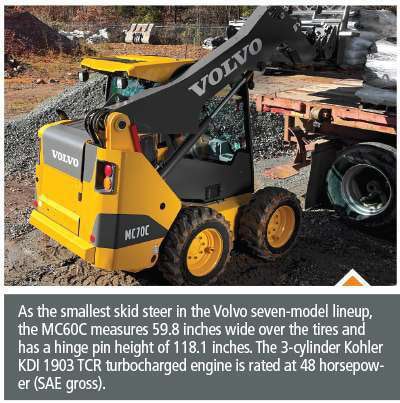
Tracks on a CTL can be counter-rotated, but it’s not a good idea. “To maximize the service life of tracks and undercarriage components, a CTL should be operated like a dozer with long, sweeping turn
s,” says Tharen Peterson, brand marketing manager, New Holland Construction.
Maximum maneuverability is also essential in applications that require precise positioning of attachments, such as breakers and sweepers, notes Dahl.
George Mac Intyre, global product portfolio manager, light equipment, Case Construction, says industry data reveal several areas where skid steers are preferred over CTLs by a margin of 3-to-1. Among them are scrap, waste, recycling, industrial material handling, and mine and quarry. “Demolition, agriculture, and state and municipal markets also use more skid steers, but by a smaller margin,” he says.
Mac Intyre adds that skid steers are better for clearing, cleaning and back-dragging. Operators ten
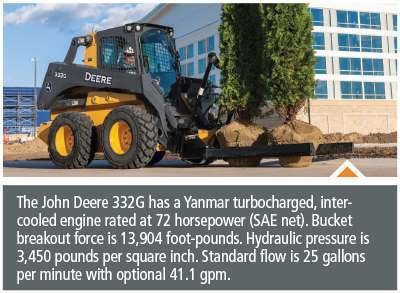
d to put a lot of downforce on the attachment – whether broom, bucket or blade – shifting much of the weight to the rear of the machine. Tracks want to be evenly loaded; wheels are more tolerant of this type of imbalance.
Coffey says some attachments still work best on a compact track loader, especially those requiring a heavy machine with superior stability, such as tree spades.
Cost control
“Anything done on wheels is more easily done on tracks,” says Storlie. That comment from ASV’s testing and reliability leader, is no surprise; ASV has a long, proud history with compact track loaders. But it’s not just machine ability that matters to customers; it’s also profitability. “If the same job can be done by either a CTL or skid steer in the same amount of time,” Storlie explains, “the skid steer will be cheaper.”
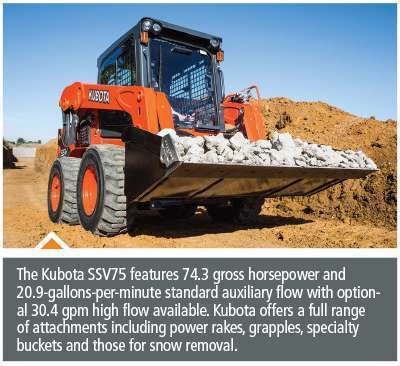
When comparing track and a wheel machines with similar engine and hydraulic specs, the CTL will cost up to 20 percent more. Skid steers also use less fuel and require significantly less maintenance. Radial-lift skid steers, with their simpler lift mechanisms, maximize the differential in both initial and ongoing costs. “Compact track loaders, on average, cost 5 to 10 percent more to operate and maintain,” says Scotese.
A key component in the O&O cost difference is the expense of maintaining an undercarriage and replacing tracks. “Tracks remain highly engineered,” says Chang, “while skid steer tires have almost become commoditized and have a well-established supply chain.”
Because of their lighter weight, skid steers can reduce transport costs, says Scotese. The required ratings of the trailers and tow vehicles used for transport may be lower, and the combined rating may make a CDL unnecessary.
Peterson says, though, that as skid steers get larger and more expensive, the difference in initial investment between the biggest skid steer models and some compact track loaders is decreasing.
Narrowing the gap
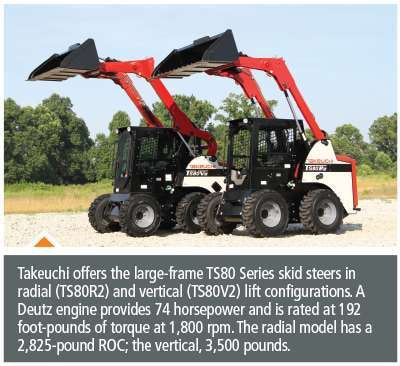
Even in areas where CTLs have clear advantages, owners of skid steers can take steps to narrow the per
formance gap. Over-the-tire tracks (OTTs) can provide many of the benefits of a dedicated track machine and can yield lower ground pressure for a skid steer than a comparable CTL, says Dahl. That’s because the skid steer weighs less than the CTL. The weight difference is enough that the ground-pressure advantage remains in place
despite the difference in track-on-ground surface area between the two machines.
Dahl says customers who need tracks all the time have switched from skid steers to compact track loaders, greatly reducing the demand for over-the-tire tracks. The availability of CTLs from rental houses has also cut into demand by making them readily available to customers who need them only occa
sionally. But for customers who need tracks seasonally, OTTs are a cost-effective solution.
But Zupancic warns there are potential issues with over-the-tire tracks. They can collect rocks, scraps of lumber and other debris that may break tire beads and may even break a chain. The machine can walk out of its tracks on counter-rotation, especially with rubber tracks. Steel tracks can cut tire sidewalls.
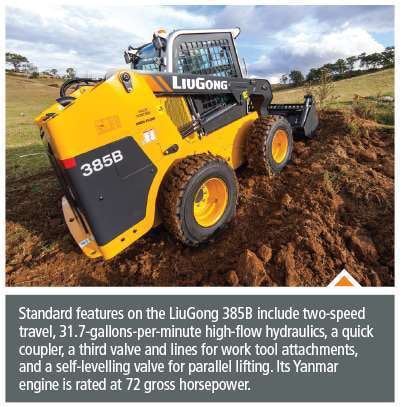
Jorge De Hoyos, Kubota senior product manager of skid steers and compact track loaders, says installing tracks over solid and semi-solid tires can overstress parts of the skid steer. That’s because these types of tires may not offer enough flex, and the weight and shock load of the tracks are passed directly to the chain tank walls of the undercarriage.
Storlie notes that all ASV skid steers are designed to accept over-the-tire tracks. Fender clearance, wheel bearings and hub design accommodate the additional size and weight of add-on tracks. ASV acquired Loegering in 2004 and offers Loegering tracks.
Tinley says that while track options are mostly limited to width, tires offer many options. While various widths are also available with tires, tread patterns are a more important part of the package, as are solid, semi-solid and pneumatic options.
Tire chains are also available. While chains don’t improve flotation, they add traction and weight and can improve performance in sloppy conditions.
Bolt-on counterweights also enhance SSL performance, and the same counterweight has a bigger effect on the capacity of a skid steer than a CTL. This is because the same weight is a higher percentage of th
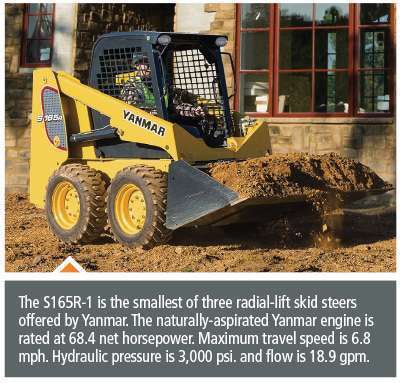
e machine’s own weight. Zupancic points out that solid and semi-solid tires also add weight; the elongated hol
es in semi-solid tires provide some cushioning.
Ultimately, the performance level of a skid steer comes down to operator skill, says Mac Intyre. “Operators need to maintain situational awareness of jobsite conditions and plan ahead. They need to know how to get un-stuck. They should read the owner’s manual, which will give guidance on managing hills, slopes and other obstacles.”
Even so, says Peterson, the advantages CTLs offer are unique to them and cannot be fully replicated on a skid steer, regardless of the skill of the operator.
Flattening the slope
After years of shifting sales numbers, the turmoil seems to be abating, and sales figures of both skid steers and compact track loaders are normalizing, albeit to a new normal. “Unit sales of our skid st
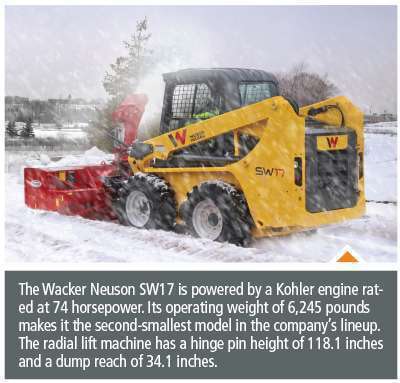
eers decreased in each of the last four years,” says Eric Berkhimer, product manager of Yanmar America. “The rate of decline stabilized somewhat beginning in 2016.” By comparison, Yanmar CTL unit sales increased over that four-year period, and the rate of increase tapered a bit in 2016, “although it picked up again in 2017.”
“There will likely be some further softening of the skid steer market,” says Storlie. “It will plateau when the market has a solid grasp of which jobs can be done by skid steers.”
While skid steer unit sales may be down from some past peak, notes Chang, “they’re not zero and will never be zero. Not everyone plays in the premium end of the market. Some focus on value, and skid steers provide maximum value.” LiuGong’s first skid steer, the CLG385B, is now available. He says some customers use CTLs and fully featured skid steers for certain tasks and more plebeian machines for other applications. “We entered the market because we believe there will always be a demand for skid steers.”



